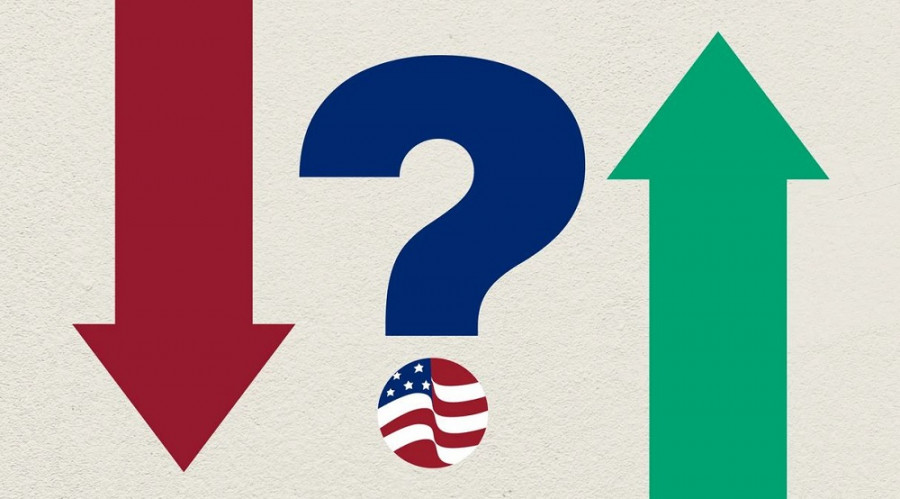On Monday, the EUR/USD pair tested the 1.07 level but almost immediately returned to previous positions. The bears decided once again not to take risks and took profits, which stopped the downward momentum. On the one hand, bearish sentiments continue to dominate the pair amid soft comments from European Central Bank representatives. On the other hand, the latest report on eurozone GDP turned out to be in the "green," providing weak but still some support to the buyers. Overall, the market is frozen in anticipation of the outcome of the Federal Reserve's January meeting, which will be announced on Wednesday, January 31. Before they announce the decision, traders should not expect a breakthrough - neither to the downside nor (especially) to the upside.

But let's start with the latest report on the European economy. GDP remained stable during the fourth quarter of 2023 compared to the previous quarter, according to preliminary data. The indicator came in at 0.0% q/q, while most experts predicted a decrease of 0.1%. In annual terms, the eurozone economy increased by 0.1%. This component of the report also landed in the "green," as analysts expected it to remain unchanged. The structure of the report indicates that the GDP of Italy and Spain increased more than analysts expected (by 0.2% and 0.6%, respectively), while France managed to avoid a recession - the second consecutive quarter of no growth.
Germany was disappointing. The "locomotive of the European economy" is moving slowly in the opposite direction: Germany's GDP contracted by 0.3% compared to the previous quarter. It is worth noting that the German economy has been balancing on the brink of recession for several quarters mainly due to weak demand in both external and internal markets.
On paper, the score is in favor of the euro, but only on paper. Since the middle of the year before last, the economy of the European region has not had any significant growth: fluctuations between -0.1%, zero growth, and +0.1% are essentially meaningless - both in terms of the standard of living and in terms of expectations of any reaction from the ECB. However, this is only the first estimate. The second estimate will be published in two weeks on February 14.
The report provided a bit of support for the euro, but we shouldn't trust the pair's growth at the moment. Traders of the pair are still awaiting key events of the current week, so they're being indecisive: sellers are holding back before the 7-figure mark, and buyers won't dare approach the boundaries of the 9-figure mark.
This situation will likely persist at least until when the results of the January meeting of the Federal Reserve are announced on Wednesday. If the US central bank signals that a rate cut may happen earlier than in the summer months, the dollar will come under significant pressure, considering that the likelihood of a rate cut in March is assessed at 50/50.
The baseline scenario for the January meeting implies a tightening of rhetoric against the backdrop of the overall rise in the Consumer Price Index (CPI), the wage index, and the US GDP in the fourth quarter. On the other side of the scales are the decline in the core CPI, the core Personal Consumption Expenditures (PCE) index, the Producer Price Index, and weak growth in the US GDP deflator. The intrigue remains, so none of the traders risk opening large positions on the EUR/USD pair.
It's also worth noting that lately, ECB representatives have been voicing somewhat contradictory rhetoric. Alongside "moderate hawks" insisting on maintaining rates for (at least) the next six months, doves have become more active, suggesting a softening of monetary policy in the near future. For instance, the head of the Central Bank of Portugal, Mario Centeno, said that the central bank does not need to wait for wage data in May to make a decision on a rate cut. Meanwhile, his colleague, ECB Executive Board member Peter Kazimir, said that a rate cut in June is "more likely than in April."
Given such contradictory rhetoric, we should also focus on the report that will be published on Thursday, February 1. This is the preliminary estimate of inflation in the eurozone. According to forecasts, the CPI is expected to decrease to 2.7% in January. If, contrary to expectations, the indicator demonstrates acceleration again, the euro will receive significant support. The core CPI should come in at 3.2% - the weakest pace of growth since April 2022. Here, a downward trend has been observed for five consecutive months, and January should become the sixth month in this series. If this indicator unexpectedly rises again, the hawks' positions will significantly strengthen, as well as the positions of the single currency.
Therefore, one should be skeptical about the current price fluctuations. Buyers and sellers of EUR/USD alternately take the initiative, but the pair continues to trade within the 8-figure range. You may consider long positions only after the price consolidates above the target of 1.0920 (the average line of the Bollinger Bands indicator on the daily chart). You may consider shorts when consolidating below 1.0810 (the lower line of the Bollinger Bands on the same timeframe), when the pair settles in the 7-figure range. At the moment, the pair is in a suspended state, awaiting key events of the week.
The material has been provided by InstaForex Company - www.instaforex.comfrom Forex analysis review https://ift.tt/3XoSGbA
via IFTTT
